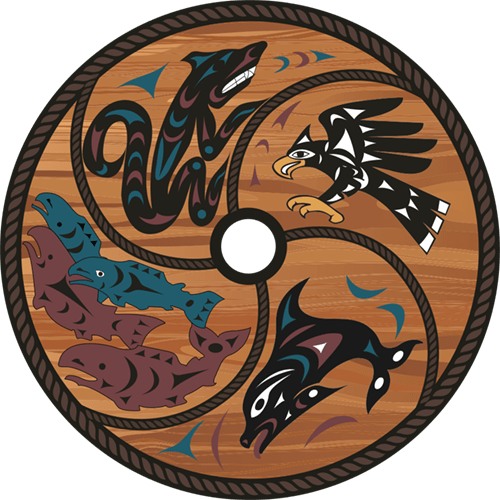
Times Colonist: Jul 6, 2014
SARAH PETRESCU
Times Colonist
B.C. policies that do not give First Nations burial grounds the same protection as cemeteries are discriminatory and out of date, says Tseycum Chief Vern Jacks.
Jacks and other local aboriginal leaders have been fighting to protect a small island in Ganges Harbour where human remains and burial cairns were found in 2006.
Because the burial site dates from before 1846, it is managed under the Heritage Conservation Act – not the Cremation, Interment and Funeral Services Act, which offers greater protection.
“The laws are racist,” Jacks said. “We’re tired of being disrespected.”
Provincial archeologists in the 1970s marked Grace Islet as part of an ancient First Nations village. It later became privately owned and subdivided into a residential lot. The 0.75-hectare piece of land was bought in1990 by Alberta businessman Barry Slawsky, who is now building a luxury home on the site.
The development has been intermittently stalled by a series of archeological assessments and permit requirements since remains were found.
The owner has fulfilled all legal requirements and adjusted his plans. He is building a house on stilts so as not to disturb any burial spots, and has begun to clear the land.
Jacks said Slawsky has not responded to requests to sell the property or meet with First Nations. Some band leaders even enlisted a local rabbi to appeal to Slawsky on a religious values level.
“Can you imagine if us chiefs went to Ross Bay Cemetery and said we’re going to build a longhouse over it? Jacks asked.
The Tseycum is among a growing group of people – including several First Nations, politicians, archeologists and residents – opposed to building over the burial grounds. They want the land to be protected, but the province has said it has no plans to purchase the land.
In British Columbia, burial sites dated pre-1846 fall under the Heritage Conservation Act and any alterations are managed by the archeology branch. Burial sites established after that time, including Ross Bay Cemetery (1873) and Pioneer Square (1856) in Victoria, fall under stricter cemetery legislation.
“Given cemeteries generally date from the time of European settlement, they are well documented, whereas First Nations’ burial grounds and artifacts might not be and sometimes are only discovered when development occurs,” said Vivian Thomas, spokeswoman for the Ministry of Forests, Lands and Natural Resource Operations.
Jacks and Simon say marking and documenting the sites is a concern because of a long history of grave robbing and desecration.
“We know where [the sites] are. That knowledge exists with us,” Simon said.
Robert Morales, lawyer and chief negotiator for Hul’qumi’num Treaty Group, said the Cremation, Interment and Funeral Services Act has a very high standard of behavior attached to it.
“You can’t drive a car in a cemetery or play games,” Morales said. “In my reading, it’s because [the law] sees these areas as more than a repository for bodies. It’s a place of spiritual connection.”
He asked why these same laws don’t apply to First Nations, who have thousands of years of traditions and spiritual practices related to how they treat the dead.
“There are some racial undertones here,” Morales said. “Canada has had an active policy of collecting things from First Nations and putting them in museums as artifacts and curiosities, not grandfathers and great-grandfathers.”
Eric McLay was one of the first archeologists to visit Grace Islet after the first remains were found.
“It was a bit shocking to see the remains lying there in the sun,” he said, noting the bones he found were from an older man and a youth. He said they were likely 2,000 to 4,000 years old and that he found several cairns on a quick walk around the islet – which might not have been evident to an untrained eye.
“This is an ongoing issue. Most developments can work around burial sites but Grace Islet is too small.”
He said the islet is not an area with random burials. “It’s a cemetery. And cemetery laws are really about the living. They give a place of sanctuary and memorial. …The problem with the archeology branch is they see human remains as objects that can be moved.”
Sitting under a Garry oak tree outside the Tseycum band office, Jacks and his colleagues said the spot represents where the government and developers should come before deciding to alter First Nations sites. “We need face-to-face consultation. Not a letter,” Jacks said.
Tsawout Chief Harvey Underwood said the goal is to protect Grace Islet but also to educate the public.
“We’ve been here thousands of years. This is our life, our culture. The people there have relatives here now, still living,” he said. “If we lose our ways, we’re done.”






